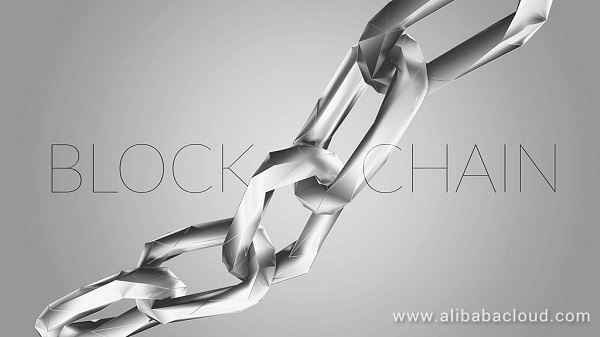Blockchain is a revolutionary technology that is starting to have a significant impact on businesses worldwide. Despite its abstractness and complexity, blockchain brings various benefits to industries, such as greater transparency and enhanced security.
However, it takes time to study the design and master specific programming languages for blockchain. Appropriate learning materials help shorten this process, which is why since the emergence of Bitcoin, a barrage of popular online content have been released to explain how it works.
In October 2017, Mr. Haseeb Qureshi, a well-known blockchainist, posted a blockchain demo and source code for making a simple blockchain using Ruby. In my opinion, this is one of the best materials available online to help the public better understand blockchain. In this article, we'll be taking a closer look at Mr. Qureshi's demo. Specifically, we will be talking about the six stages involved in making a functional blockchain with Ruby.

Balance check and money transfer are implemented at this stage. The transfer is addition or subtraction performed based on the account balance.
GET, and POST of the HTTP protocol are the most suitable options to implement this functionality. GET obtains data from the server and POST changes data on the server.
Here, the presentation of the UI does not require HTML protocol. You can use the Ruby Web framework Sinatra to organize URLs and related methods and view the transfer information in the command line by using UE.
Methods on the client and URLs on the server are quite simple:
Client: client.rb
def create_user(name) … end
def get_balance(user) … end
def transfer(from, to, amount) ... endServer: haseebcoin.rb
get "/balance" ... end
post "/users" ... end
post "/transfers" ... endRequired knowledge for this layer: ruby, HTTP GET, and POST, Sinatra
The blockchain has a decentralized structure, known as "Gossip Protocol." The word "gossip" here is not referring to rumors but information that gets disseminated in a decentralized network.
Let us build a Gossip network where movie names can get exchanged.
client.rb sends messages to a specified port.
def self.gossip(port, state)
...
Faraday.post("#{URL}:#{port}/gossip", state: state).body
...
endgossip.rb receives two parameters: the source port and the destination port. Exchange information through specific ports on the source end, such as ports 1111 and 2222.
In a real decentralized network, the two ports are essentially two network nodes. Exchanging information between different local ports represents communication between different nodes in a simulated network.
On each node:
Speak out your favorite movie name every 3 seconds.
every(3.seconds) do
…
gossip_response = Client.gossip(port, JSON.dump(STATE))
update_state(JSON.load(gossip_response))
...
endChange the favorite movie name every 8 seconds.
every(8.seconds) do
…
update_state(PORT => [@favorite_movie, @version_number])
...
endThe server receives and processes the data.
post '/gossip' do
…
update_state(JSON.load(their_state))
…
endIn a four-person network:
After running for a period, the four nodes finally obtain information of peer ends, and the data keeps changing. This is a simple Gossip network.
Top-level encryption algorithms are the foundation of blockchain. The asymmetric encryption technology is used at this layer to implement blockchain accounts. The RSA algorithm can generate public keys, private keys, and enforce asymmetric encryption.
def generate_key_pair … end
def sign(plaintext, raw_private_key) ... endThanks to the OpenSSL module in Ruby language, we can quickly implement asymmetric encryption and signature verification. In blockchain, public keys are accounts, and private keys are passwords. Each pair of keys is one blockchain account.
Decrypt the ciphertext:
def plaintext(ciphertext, raw_public_key) … endVerify whether the ciphertext is a message:
def valid_signature?(message, ciphertext, public_key) … endRequired knowledge for this layer: asymmetric encryption algorithm
At this stage, proof-of-work gets implemented, and blocks get generated for the blockchain. It is a time-consuming and arduous process. Hash functions are irreversible and free of conflicts. The calculation process is straightforward. A result is obtained by merely performing a hash operation on the input.
The input is the information about money transfer, including the transfer amount, the remitter's name, the recipient's name, and so on. Hash operations have various algorithms.
Here, the SHA256 algorithm gets used:
def hash(message) … endWhen the same information gets hashed, different results come up each time. We keep performing operations until the obtained result meets some features, for example, starting with several digits of 0.
Verify whether the result starts with several digits of 0:
def is_valid_nonce?(nonce, message)
hash(message + nonce).start_with?("0" * NUM_ZEROES)
endIt is not easy to perform operations to meet the above conditions. They consume a lot of time. The entire process is called mining:
def find_nonce(message)
…
until is_valid_nonce?(nonce, message)
...
endThe input includes the result of the previous hash operation. Therefore, each hash operation gets affected by the previous one. In other words, this is a chain structure. That is why it is called blockchain.
At this stage, the first block gets initialized and accordingly a chain structure gets generated to form a blockchain. Blockchain can get stored in the Array structure. During storage, the blocks must get validated.
Initialize the block: class Block
def initialize(prev_block, msg)
@msg = msg
@prev_block_hash = prev_block.own_hash if prev_block
mine_block!
endThe most challenging work during mining is finding a nonce.
def mine_block!
@nonce = calc_nonce
@own_hash = hash(full_block(@nonce))
endA complete block gets compacted in this way.
def full_block(nonce)
[@msg, @prev_block_hash, nonce].compact.join
endInitialize the blockchain: class BlockChain
Merely use Array to store it!
def initialize(msg)
@blocks = []
@blocks << Block.new(nil, msg)
endAdd blocks to the chain. The entire blockchain is continuously growing.
def add_to_chain(msg)
@blocks << Block.new(@blocks.last, msg)
puts @blocks.last
endYou must validate rigorously whether the blocks are healthy.
def valid?
@blocks.all? { |block| block.is_a?(Block) } &&
@blocks.all?(&:valid?) &&
@blocks.each_cons(2).all? { |a, b| a.own_hash == b.prev_block_hash }
endFinally, Blockchain works its magic through a harmonious collaboration with every component in the network. At Stage one, the transfer is of the Transaction class and needs to use a private key to sign the information.
@signature = PKI.sign(message, priv_key)The reward for the miner who gets the first block is 500,000 pieces of silver.
def self.create_genesis_block(pub_key, priv_key)
genesis_txn = Transaction.new(nil, pub_key, 500_000, priv_key)
Block.new(nil, genesis_txn)
endVerify whether spending charged to the account is valid.
def all_spends_valid?
compute_balances do |balances, from, to|
return false if balances.values_at(from, to).any? { |bal| bal < 0 }
end
true
endAdd unknown node $PEERS to maintain the growth of the network.
if PEER_PORT.nil?
# You are the progenitor!
$BLOCKCHAIN = BlockChain.new(PUB_KEY, PRIV_KEY)
else
# You're just joining the network.
$PEERS << PEER_PORT
endData processing between nodes reads and then updates the blockchain and peers.
# @param blockchain
# @param peers
post '/gossip' do
their_blockchain = YAML.load(params['blockchain'])
their_peers = YAML.load(params['peers'])
update_blockchain(their_blockchain)
update_peers(their_peers)
YAML.dump('peers' => $PEERS, 'blockchain' => $BLOCKCHAIN)
endProcessing a received block focuses on whether the chain is getting longer.
def update_blockchain(their_blockchain)
return if their_blockchain.nil?
return if $BLOCKCHAIN && their_blockchain.length <= $BLOCKCHAIN.length
return unless their_blockchain.valid? $BLOCKCHAIN = their_blockchain
endUpdate peers so far as they are new.
def update_peers(their_peers)
$PEERS = ($PEERS + their_peers).uniq
endWhen transferring money, get the recipient's pub_key and then transfer the funds through the remitter's pub_key.
# @param to (port_number)
# @param amount
post '/send_money' do
to = Client.get_pub_key(params['to'])
amount = params['amount'].to_i
$BLOCKCHAIN.add_to_chain(Transaction.new(PUB_KEY, to, amount, PRIV_KEY))
'OK. Block mined!'
endPut the blockchain into a Gossip network and assemble all functional components. There you go. You have successfully created a working blockchain!
You can find more information about this Demo on Github: https://github.com/Haseeb-Qureshi/lets-build-a-blockchain
To learn more about blockchain and other innovative technologies, visit www.alibabacloud.com.

2,603 posts | 747 followers
FollowAlibaba Clouder - May 25, 2021
Alibaba Clouder - September 27, 2019
Alibaba Clouder - October 8, 2019
Alibaba Clouder - May 23, 2018
Alibaba Clouder - January 27, 2020
Alibaba Clouder - September 6, 2019

2,603 posts | 747 followers
Follow LedgerDB
LedgerDB
A ledger database that provides powerful data audit capabilities.
Learn More Blockchain as a Service
Blockchain as a Service
BaaS provides an enterprise-level platform service based on leading blockchain technologies, which helps you build a trusted cloud infrastructure.
Learn MoreMore Posts by Alibaba Clouder